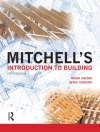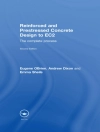This book identifies emerging technologies that allow the reuse and regeneration of industrial wastewater with innovative and applied approaches throughout the wastewater treatment cycle. Today, it is increasingly clear that treated urban wastewater, whose reuse has become an important component of long-term water management worldwide, is a key source of chemical pollutants and emerging biological concerns. Current water-quality guidelines for reclaimed wastewater predominantly address the risks associated with the presence of microbial organisms and chemical parameters such as biological oxygen demand, chemical oxygen demand,
E. coli and worms, and in some cases heavy metals; however, they are insufficient for the full evaluation of risks. The global growth of population is concentrated in urban areas; therefore, most of the challenges and solutions related to wastewater reside in urban treatment plants. Unless wastewater management and wastewater governance processesare significantly improved within a decade, it is likely that our societies will face severe and prolonged water insecurity and urban floods.
The application of sustainable technologies can eliminate or minimize micro-contaminants in wastewater. Several organizations focus on the potential impacts to humans and their environments by wastewater reuse. This book gathers new research and reviews work from researchers and scientists to identify the main barriers and limitations that will need to be overcome, so that wastewater reuse strategies gain more momentum and will be adopted more efficiently worldwide.
The book is designed for engineers, scientists, and other professionals who are seeking an excellent introduction to and basic knowledge of the principles of environmental bioremediation technologies.Tabella dei contenuti
– Constructed Wetlands and Vermifiltration two successful alternatives of wastewater reuse: A commentary on development of these alternate strategies of wastewater treatment.- Treatment of metallurgical wastewater by a combination of zero valent iron and coagulation technology.- Valorization of sugarcane vinasse for fungal biomass protein production: Potential application as fish feed ingredient.- Emerging contaminants in wastewater: Eco-toxicity and sustainability assessment.- Membrane and disinfection technologies for industrial wastewater treatment.- Holistic approach to remediate heavy metals and radionuclides.- The Role of Nanotechnology in Bioremediation of Pollutants.- Nanobiotechnology: A Sustainable Approach for Marine Environment Bioremediation.- Cell immobilization for the fungal bioremediation of wastewater contaminated with heavy metals.- Waste Water Treatment Technologies.- Genetically Modified Microbe Mediated Metal Bioaccumulation: A Sustainable Effluent Treatment Strategy.- Nanobioremediation: Ecofriendly Approach In Pollutants Removal.- Bioremediation of Soils Polluted with Hexavalent Chromium using Bacteria.- New Bioremediation Technologies to Remove Heavy Metals and Radionuclides.- Water reuse planning, policy, monitoring requirements, and standards/criteria.- Wastewater Treatment and Reuse in Future Cities.- Inorganic nitrogen and phosphate removal from port water using microalgal biotechnology towards sustainable development.- Bioremediation of organic and heavy metal co-contaminated environments.- Algal microbial symbiotic system-From a biological process to biorefinery.- Emphasizes the role of nanotechnology in bioremediation of pollutants.- Treatment of trace organics and emerging contaminants using traditional and advanced technologies.
Circa l’autore
Dr. Maulin P. Shah is interested in genetic adaptation processes in bacteria. He has more than 350 research publications in highly reputable national and international journals. He directs the research program at Enviro Technology Ltd., Ankleshwar, India. He has guided more than 100 post-graduate students in various disciplines of life science. He is an active editorial board member in more than 150 renowned journals in the field of environmental and biological sciences. He was the founder and the editor-in-chief of the International Journal of Environmental Bioremediation and Biodegradation (2012–2014) and the Journal of Applied & Environmental Microbiology (2012–2014) [Science and Education publishing (Sci EP), USA]. He is also serving as a reviewer for various journals of national and international repute. He has edited 225 books in the area of wastewater microbiology and industrial wastewater treatment.












